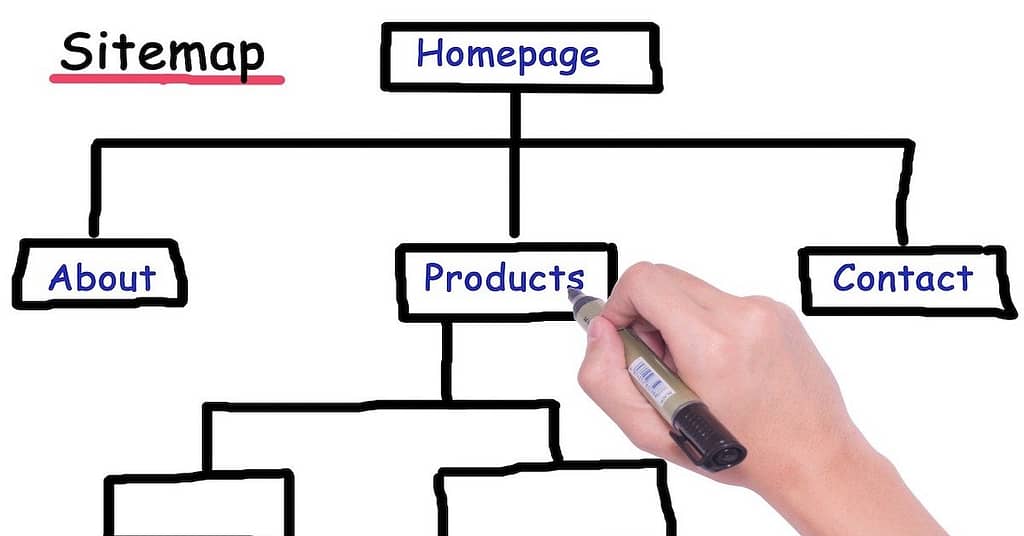As a website owner or blogger, you’re well aware of the best practices required to ensure that search engines, including Google, have a deep understanding of your website’s content. Adhering to these best practices is crucial as it plays a pivotal role in the correct indexing of your web pages, subsequently enhancing their visibility to users within search results. One of the fundamental and widely recommended best practices to accomplish this is by implementing a sitemap.
What is a Sitemap?
A sitemap is like a map for search engines. It’s a file that provides information about the pages, videos, and other files on your website and how they are connected. By having a sitemap, you make it easier for search engines to crawl and understand your website’s structure.
Why Notify Search Engines About Your Sitemap?
Creating a sitemap is only the first step. To ensure that search engines are aware of it and regularly crawl your website, you need to notify them. Here’s how you can do it:
Steps to Notify Search Engines About Your Sitemap

- Create a Sitemap: You can use various tools and plugins to generate a sitemap for your website. Popular platforms like WordPress have plugins that can do this for you.
- Submit to Google: Google, being the most widely used search engine, provides a specific tool called Google Search Console. You can submit your sitemap here. Make sure you’re signed in with your Google account, select your website, and find the “Sitemaps” section to submit your sitemap URL.
- Submit to Other Search Engines: Besides Google, you can also submit your sitemap to other search engines like Bing. Each search engine might have its webmaster tools platform for this purpose.
- Regularly Update Your Sitemap: Whenever you add new content or make significant changes to your website, update your sitemap and resubmit it to the search engines.
By following these steps, you’re actively notifying search engines about your sitemap, ensuring that they are aware of your website’s latest content. This proactive approach helps in improving your website’s visibility in search results, ultimately driving more organic traffic.
A sitemap is a vital tool in your SEO toolkit, and notifying search engines about it is an essential step in the process. By doing so, you’re taking control of how search engines discover and index your valuable content, using best practices to rank your site.
Remember, SEO is an ongoing process, and staying proactive in managing your sitemap is one of the keys to success.
Add Sitemap Information:
In this section, we’ll provide information about our recently updated sitemap and its role in helping search engines discover and index our website efficiently.
Sitemap URL: Our sitemap index file is located at https://craftaihub.com/sitemap.xml.
The Importance of Our Sitemap:
Our sitemap serves as a vital tool in ensuring that search engines like Google can navigate and index the content of our website with ease. Here’s why it matters:
- Efficient Indexing: The sitemap acts as a roadmap for search engine crawlers, providing a clear and organized list of all the pages, posts, and media files on our website. This structured format streamlines the indexing process.
- Comprehensive Coverage: By including all relevant pages in our sitemap, we guarantee that search engines don’t miss any important content. This is especially crucial for bloggers like us who continually add new posts and pages to our website.
- Faster Updates: Whenever we make updates to our website, such as publishing a new blog post or modifying existing content, our sitemap reflects these changes. Search engines can quickly identify these updates, leading to more accurate and timely search results.
By maintaining an up-to-date sitemap and notifying search engines about it, we’re taking proactive steps to enhance our website’s visibility in search results. This, in turn, helps us reach a broader audience and achieve our blogging goals using best practices.
So, rest assured that our sitemap plays a crucial role in ensuring that our blog content is discoverable and accessible to search engine users.
Understanding the Significance of Sitemaps for Effective Website Indexing
Sitemaps are like the roadmaps of the internet, guiding search engines through the labyrinth of websites and helping them discover valuable content. They play a pivotal role in optimizing your website’s visibility on search engine result pages. Here’s why they matter:
1. Efficient Crawling and Indexing:
- Sitemaps provide a structured blueprint of your website, listing all its pages, posts, and media files. This organization makes it easier for search engine bots to crawl and index your site comprehensively.
- By following the links within the sitemap, search engines navigate through your site’s hierarchy, ensuring that no page is left unnoticed.
2. Timely Updates:
- Websites are dynamic, with new content regularly added and existing content modified. Sitemaps reflect these changes, allowing search engines to keep up-to-date with your site’s evolution.
- When you notify search engines about your sitemap updates, you ensure that they are aware of the latest alterations, making your content accessible to users in real-time.
3. Improved Visibility:
- Sitemaps enhance the chances of your web pages appearing in search results. This is especially critical for bloggers, as it helps your well-crafted content reach a broader audience.
- When search engines efficiently crawl and index your site, your content becomes more discoverable to users searching for relevant information.
In conclusion, sitemaps are indispensable tools for website owners and bloggers. They facilitate the seamless interaction between your website and search engines, ensuring that your content is not only indexed but also presented to users searching for relevant topics. By proactively notifying search engines about sitemap updates, you guarantee that your website remains current and competitive in the ever-evolving digital landscape.
So, remember, when it comes to SEO and effective website management, sitemaps are your allies in achieving online success.
Recommended reading

